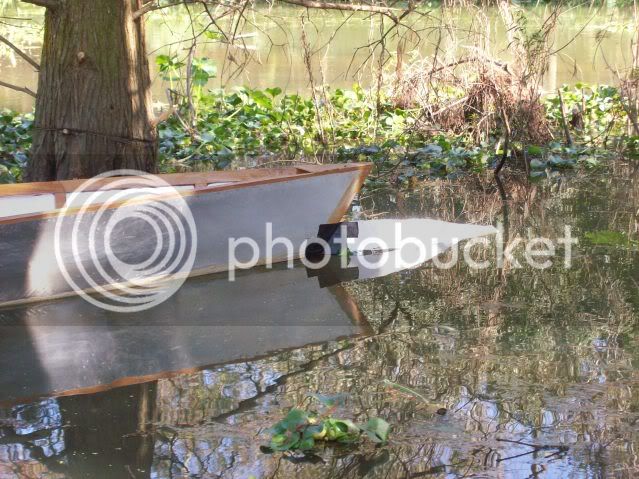Well, maybe not REAL serious boat building stuff.
Something else from the somewhat twisted minds at Roll The Dice Fabricators. Quite crude and thrown together but it's a proof of concept.
Longer boats, on average, paddle faster and easier than shorter boats. BUT, shorter boats boats are lighter, turn better and are easier to load and unload. What if you could have the advantages of a 3 ft. longer waterline on a 13-14ft boat?
Voila! The boat extender.

Don't laugh......it seems to work. I took it out for a trial run and it seems to cruise a bit better and glide a bit farther. One other not-so-obvious advantage . When you paddle with a single or double paddle, the boat yaws back and forth .....some more than others. It might not be much in a 16-17 ft boat, but it's there. Now , when the stern swings out even an inch, it creates turbulence and eddies in it's wake. I have a feeling that this addition will help absorb some of that turbulence and turn loose of the water more gently because it gives to any side pressure. Fish tails work like this. To work properly, this addition would have to be faired into the hull.
OK, Fire away. :mrgreen:
Joey
Something else from the somewhat twisted minds at Roll The Dice Fabricators. Quite crude and thrown together but it's a proof of concept.
Longer boats, on average, paddle faster and easier than shorter boats. BUT, shorter boats boats are lighter, turn better and are easier to load and unload. What if you could have the advantages of a 3 ft. longer waterline on a 13-14ft boat?
Voila! The boat extender.

Don't laugh......it seems to work. I took it out for a trial run and it seems to cruise a bit better and glide a bit farther. One other not-so-obvious advantage . When you paddle with a single or double paddle, the boat yaws back and forth .....some more than others. It might not be much in a 16-17 ft boat, but it's there. Now , when the stern swings out even an inch, it creates turbulence and eddies in it's wake. I have a feeling that this addition will help absorb some of that turbulence and turn loose of the water more gently because it gives to any side pressure. Fish tails work like this. To work properly, this addition would have to be faired into the hull.
OK, Fire away. :mrgreen:
Joey

